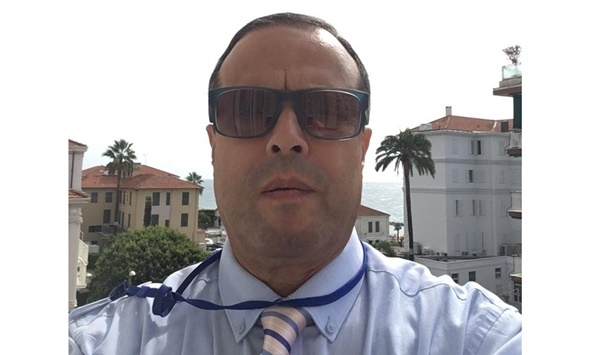The 'Qalam' Arabic calligraphy exhibition opened on Tuesday at Eiwan Al Gassar Gallery, The St Regis Doha, with the participation of artists from nine countries to celebrate the aesthetics of Arabic calligraphy.
The exhibition features the works of 32 artists from Qatar, Palestine, Iraq, Syria, Oman, Lebanon, Iran, Bahrain and India. These works have been created across various media, including pottery, cloth, carpets and others.
The exhibition coincides with the holy month of Ramadan, as a celebration of the association of the roots of Arabic calligraphy with Islamic art since its inception. It is derived from the fluidity of Arabic calligraphy lines, the complexity of its designs and the advantage of its permanent renewal.
On choosing the topic of the exhibition, Eiwan Al Gassar Gallery founder Tariq al-Jaidah said: “It is natural for us to be interested in Arabic calligraphy, as it is a major component of our culture. In my opinion, one of the main reasons for its popularity and spread is its ability to penetrate and adapt, as it has repeatedly demonstrated its enormous potential to redefine itself within new artistic templates. We see this in the works of contemporary artists such as those we chose to participate in the 'Qalam' exhibition.”
The 'Qalam' exhibition comes as part of an artistic research project on the efforts of contemporary artists to present a new reading of Arabic calligraphy within innovative forms and templates.
Al-Jaidah believes that "the specificity of Arabic calligraphy does not only lie in the aesthetics of its forms that make it attractive to the eye". Rather, it goes beyond that to various levels of its implementation, ranging from easy drawing to extreme complexity. Artists’ reliance on it has expanded in various fields, leading to a deep connection with iconic architectural, historical and cultural landmarks, before it became an independent art in itself.
The exhibition is curated by Bachir Mohamed, artist, interior designer and archaeologist, who believes that the influence of Arabic calligraphy as an art continues.
He said, “Unlike some artistic schools that reached their peak in certain periods of time before their spread and influence receded, Arabic calligraphy continued to redefine itself - transcending its geographical borders and proving its exceptional ability to inspire generation after generation of artists whose works are still full of uniqueness and distinction.”
The 'Qalam' exhibition continues until May 15.

Glimpses from the exhibition.

Glimpses from the exhibition.

Glimpses from the exhibition.

